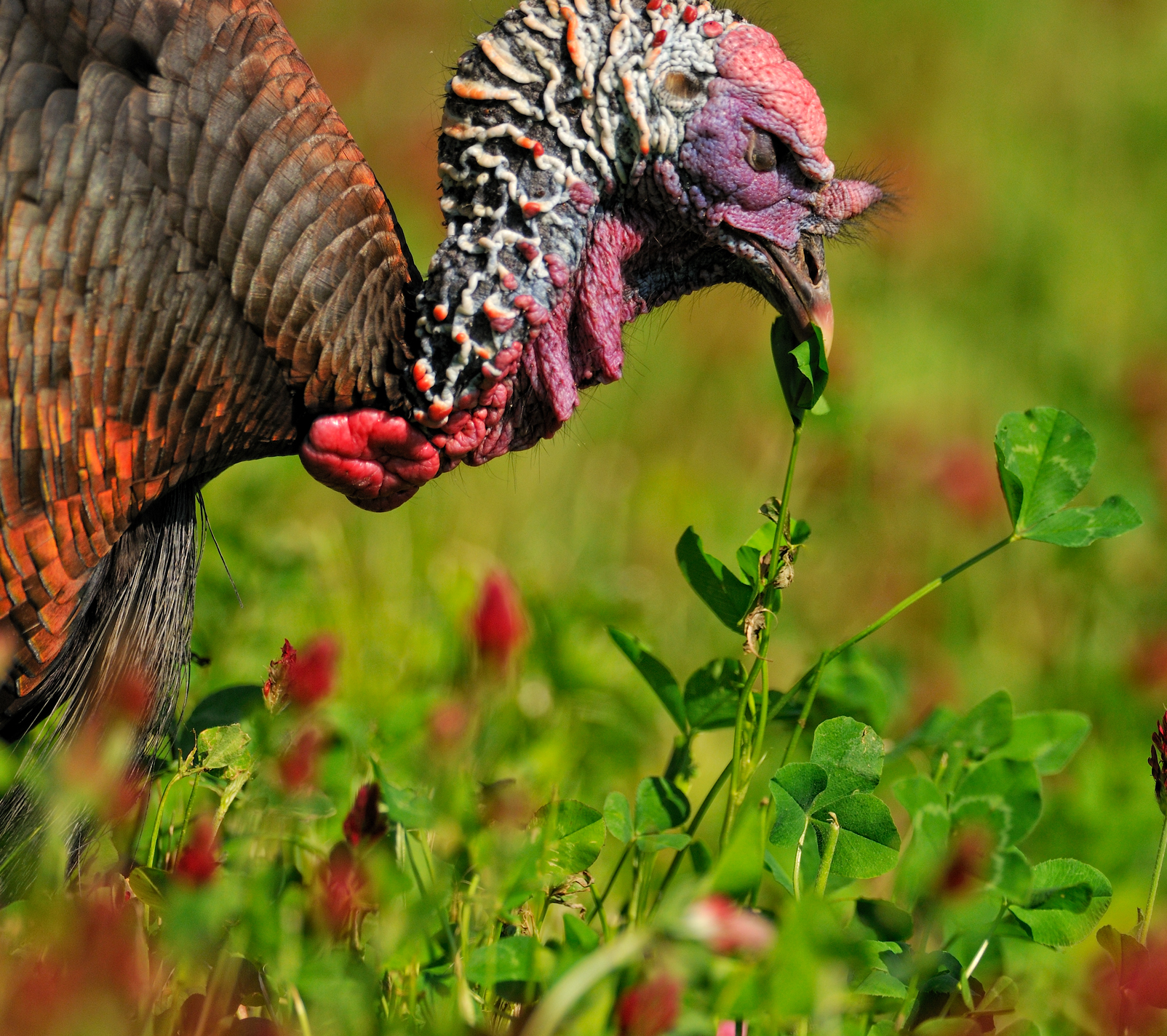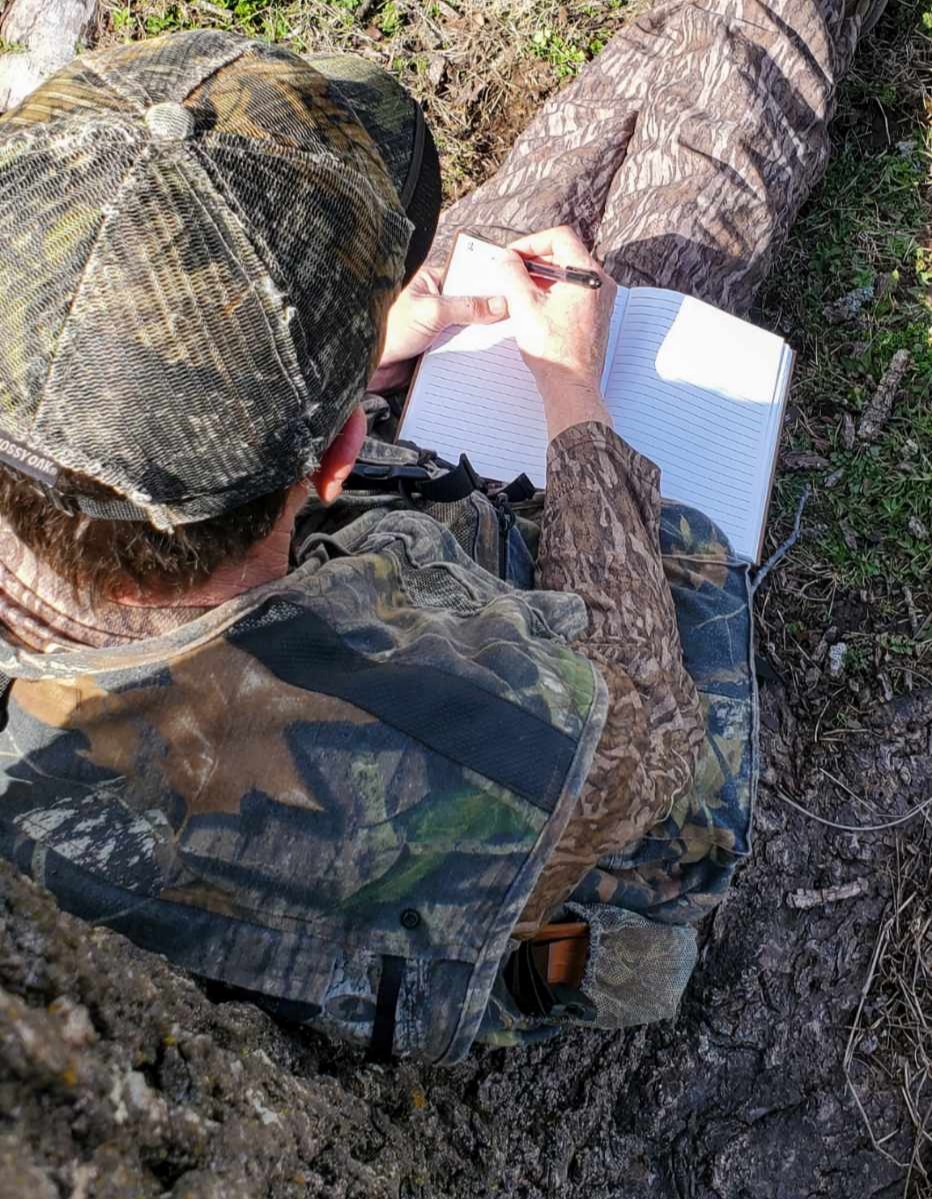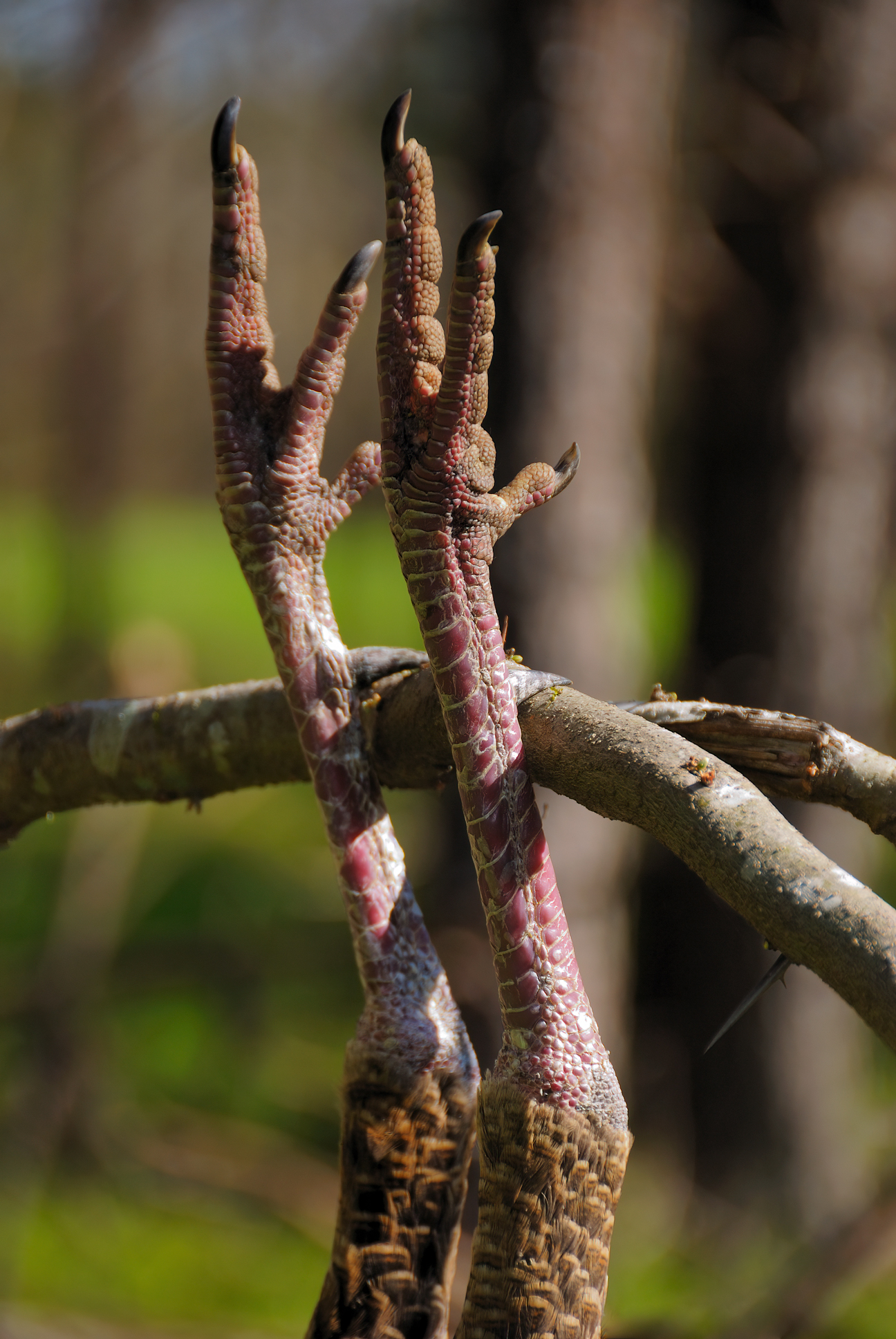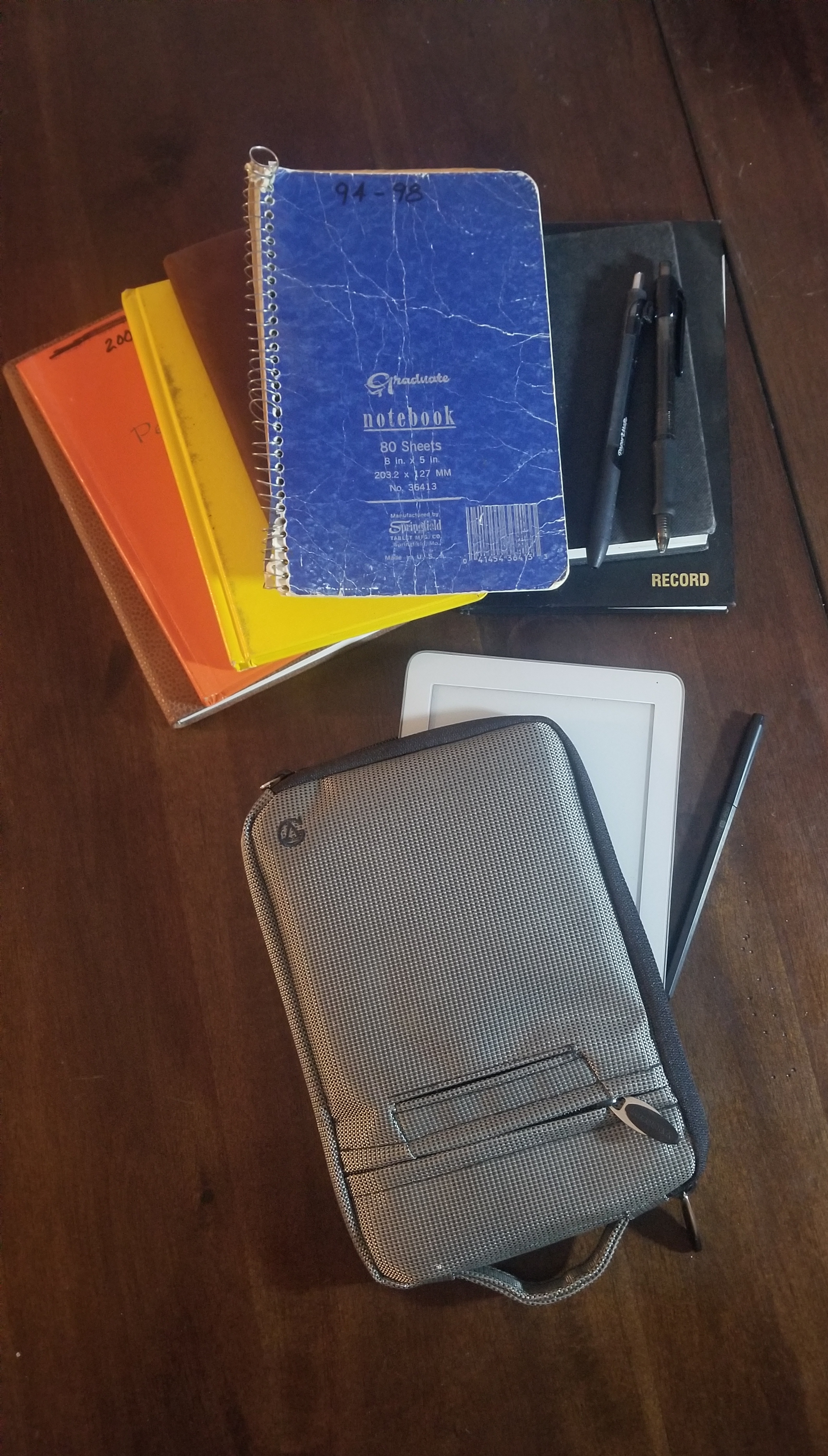Written by Jason Worley

April 23, 1993
Clear and cool, 50 to 55 degrees, with a slight breeze.
I arrived at the gate on the north side of the old Cox place with plenty of time to spare. Stepping out of my Jeep, spring peepers and the hollow call of a chuck-will's-widow greeted me. I eased up to the gate and stood for a few seconds soaking in the last few minutes of darkness. A special time that has to be felt to be understood. After climbing the gate and walking the quarter mile down the old logging road, I stood beside a large white oak at the edge of a clearing. The first gray light of dawn was close.
Just as I was about to send out my best imitation of an owl, a gobbler sounded off at three to four hundred yards to the west. I had no doubt he was roosted in the creek bottom in what I had come to call the middle pasture. I quickly gathered myself and cut the distance, hoping to get to the pasture's edge before the morning light could give away my sneak.
I settled in next to a large deadfall and caught my breath. The gobbler continued to sound off at an increased rate. The lighter it got, the more he hammered his hellos to the morning. A group of crows came sailing through the field, and the gobbler had to gobble 20 times before the raucous crows faded off. I eased my gun to my knee and laid my box call by my leg. The game was about to begin.
The Tom sailed into the middle of the pasture and immediately went into strut. He was a solid 75 yards away, but I could still see the steam drift up with each gobble. Within 5 minutes, he was surrounded by six hens, and I knew the chances of pulling him close enough for a shot were slim. A classic field bird. As close to unkillable as they came. After around 2 hours of watching and trying my best to seduce him away from his ladies, I watched as he disappeared into the woodlot that surrounded the creek.
I will be back tomorrow.
It was somewhere around the age of 15 or 16, while reading one of my father's old issues of Field and Stream, that I discovered the practice of keeping a journal while hunting. It was an article by an author whose name has slipped my memory. The article was made up of daily entries telling the story of a high-country elk hunt in the mountains of Colorado. Each day's entry not only told of conditions and location but also painted a picture of a far-off place a kid my age could only dream about.
The hunter told of his daily struggles with weather conditions, animals that seemed to vanish, and a grumpy old guide that had little patience for the author's lack of fitness. The journal entries were written in a style that reminded me of a well-told story. It was much more than simple facts about each day in those high mountains. The entries took me there with him. I told myself that day I would start recording my hunts, and my journaling days were about to begin.

April 24, 1993
Clear and calm 55 degrees.
I cussed myself this morning as I sped up the driveway in my old Jeep. I had overslept after staying up late, cramming for a test, and I was paying for my lack of priorities. It's spring turkey season, Jason!!! As I slid to a stop in front of the gate at the Cox place, I muttered to myself, "Get your head right and focus on hunting; there's plenty of time left in the semester to get your grade up if you bomb one test."
I quickly climbed the gate and half walked, half jogged down the logging road to get back to the edge of the middle pasture. I knew the gobbler would be back, and I planned to be set up and ready before he let out his first salute to the day. Setting up a little farther to the west than I had the previous morning, I felt confident that the additional twenty or thirty yards would help get me a bit closer and hopefully encourage the gobbler to move out of the center of the pasture and within gun range.
As expected, the Tom was back in the same grove of trees above the creek. His gobble seemed to shake the dew off the buckbrush surrounding my setup. The morning light made the treeline barely visible just below the gobblers' roost, but I tried dearly to spot any hens that may be with him. As I searched the skylined branches, the Tom pitched forward and sailed into the field. Within ten minutes, he had four ladies surrounding him. The gobbler had to have gobbled a hundred times in the next hour, and he never once broke strut.
My legs were cramping up after being waded up next to a massive black oak for what seemed like days. Just as I was about to stretch my legs out, I heard what sounded like a person walking just 20 or 30 yards to my right. I slowly turned to see a pair of jakes standing beside a couple of scrubby cedars. Thankfully they didn't see me, but they made a beeline straight to the gobbler. I couldn't believe what I was seeing. The Jakes doubled up on the Tom, and within about 15 minutes, they were all on the far end of the pasture. The gobbler had already lost 2 of his hens before the Jakes showed up, and I felt confident his other lady friends would only aid the Jakes in dragging him away. Dang Jakes!!! I couldn't believe it.
I'll try again tomorrow.

During the spring season when I was sixteen, I bought my first Journal and told myself I would start recording my hunts. I had done a little research and found that many hunters made it a practice of recording basic facts of their hunt. Things like temperature, wind, and simple weather conditions were the norm; details used mainly for reference and future decision-making. Terribly dull stuff to a 16-year-old kid. I'm not saying basic details aren’t good, but I wanted to write more. The vivid pictures that the high country elk hunter had painted with his journals were full of enough detail to be used as a reference for future hunts, but much more importantly, it told a story.
That first Journal was a .75-cent spiral notebook from the local drugstore. I snagged a couple of number two pencils from my mom's desk, and with a sharp pocket knife always at hand, I was ready to begin telling my stories. Stories that I hoped twenty years from now would take me back to the wooded ridges and open fields.
Over the years, I've used everything from that little notebook to a surveyors field book, ledger books, leather journals, and once the back of a manila envelope. Everyone's a little different regarding a preferred journal type, but after many hours spent writing about my hunts, I have a couple of suggestions. First, size is essential, and I highly suggest you get one no smaller than 5 inches by 8 inches. When sitting with the Journal in your lap, anything smaller makes for challenging writing. You will be surprised how quickly your wrists wear out if you have nothing to rest them on while writing. If possible, try to find something that is waterproof as well. A surveyors field book is a great option; they are perfect in size, and the pages shed water.
One other option that I've played around with a bit lately is a digital notebook. I'm old school to the bone, but I have found that the smaller digital tablets like the MobiScribe are super handy. Many have a neat feature of converting handwriting to text and, of course, endless storage capabilities. Having every entry on an electronic tablet is super convenient and searchable.
You could say I'm a little dated, and writing with one of these devices is strange, but they lend themselves to the younger, more tech-savvy hunters. A couple of young hunters I've taken into the woods have recently started journaling with an e-notebook, and I'm confident they would have never started if they had to chase around a pencil and paper in their turkey vest.
Regardless of the type of Journal you choose, be sure and take very good care of them. I highly recommend slipping them into a plastic bag to protect against bad weather, even a weatherproof journal. I can tell you from experience, even the best journals won't survive a fall into a cold, flooded creek. Trust me, I know. And, always carry a couple extra pens or pencils. I've lost enough pencils over the years to supply every third grader in Missouri for a solid year.
One note on writing devices. I highly recommend using a black ink pen. The reason is I have some journals that are approaching thirty years old that were written with pencils and are so faded now that I can barely read them. Even a single season of being bounced around in a vest will cause the pencil writing to fade due to the movement of the pages. If you mess up with the pen, draw a line through the words and move on.
Another precaution I need to mention is one I wish I had taken more seriously. When you fill-up a notebook, store it in a location where it cannot get lost or damaged. I hate to say it, but I lost nearly ten years' worth of journals due to a water leak. My journals had gotten stuffed into a tote in the basement of my house and were damaged when a water pipe burst. I'm still sick about it.
I always try to record the day's hunt as quickly as possible. Details begin to fade with each passing minute, and I've found the best journal entries come with a touch of adrenalin. The manila envelope told the story of a pair of gobblers that nearly ran me over within seconds of flying down. I was still shaking when I recorded the story, which I later transferred to my journal.
If basic details are all that you're after, you can easily wait a while before making an entry in your Journal. But, I can't stress the benefit of details beyond the daily conditions. I have sat and looked back at 25-year-old journals, and thanks to the detailed writing, I'm immediately taken back to that day. It can spur the nerves and bring back the emotion you felt that day hunting. Write as if you're telling a story and not just recalling facts.

April 25, 1993
Light rain, 50 degrees, no wind
I woke up to light rain and temperatures around 50 degrees. I had plenty of time this morning and felt no rush since the cloud cover would push back daylight. The late-night study session that caused yesterday's lateness didn't help. I'm confident I bombed the Bio test. Oh well, it's still turkey season!! Forgot my dang raincoat…never fails. I pulled up to the gate and nearly talked myself into heading back home to my warm, dry bed. I'm not too fond of rain. Suck it up, Jason; turkeys are earned!!
Stepping down from the gate, I picked up my gun and took my time walking down the logging road to my setup in the middle pasture. I spooked two deer on the way in but felt okay since they ran straight east. The rain was cold, but it hadn't soaked my coat when I made it to the edge of the pasture. This time I set up close to the deadfall I had hidden by on the 23rd. There was a large cedar tree that I wormed under to help hold back the rain. It helped.
I settled in and waited for daylight. The morning was slow to come, and the dampness in the air made the stillness much more intense. It was a silence you could almost feel. It was one of those mornings where it seemed as if one second it was dark, and the next it was full daylight.
Just as I was about to doze off, I heard wing beats directly behind me. I had yet to hear the Tom gobble, but I knew he had to be close. The wing beats ended in a low thump at a distance I'm sure was no more than 20 yards. I was caught with my legs stretched out and my gun across my lap. I silently screamed at myself for relaxing too much. The dark form of the gobbler emerged at the edge of the field at a little under 20 steps. The bird paused for a second as if to scan the surroundings. With a force I will never forget, the Tom dropped his head forward and shook the world with a gobble like nothing I had ever heard. The damp, heavy air made the gobble feel as if it roared forth like a freight train.
The gobbler immediately went into strut and spun tail first away from me. As if by instinct, I pulled my Winchester 1300 to my shoulder and steaded for the shot. As they often do, the gobbler refused to turn and offer a shot. My arms began to shake, and how the Tom didn't hear me breathing was beyond me. It was an intense moment, and just when I was about to lower the gun, the bird turned and came out of strut. The gun came to life. The silence was shattered with an almost intrusive boom from the shotgun, and the gobbler lay still. I had never dropped a bird so efficiently that it didn't flop at all, but this gobbler didn't even kick.
Thank you, Lord, for another Spring turkey season.
23 pds, 10.5-inch beard, 1-inch spurs
In a world driven by instant gratification and a need to be seen, there's nothing like an old gobbler to humble even the greatest of hunters. The experience of calling up a wise old gobbler is as close to spiritual as you will find anywhere outside of Church. It's an experience that deserves to be shared with more than just photos. Cell phones will succumb to time, and photos stored in the cloud can easily disappear, but a journal full of experiences is a true treasure. A treasure that, when cared for, can tell stories that live for years. We are so often caught up in the idea that we need to capture the moment we tend to forget to be present in the moment. That presence is best described with the written word inside a turkey hunters Journal.






























